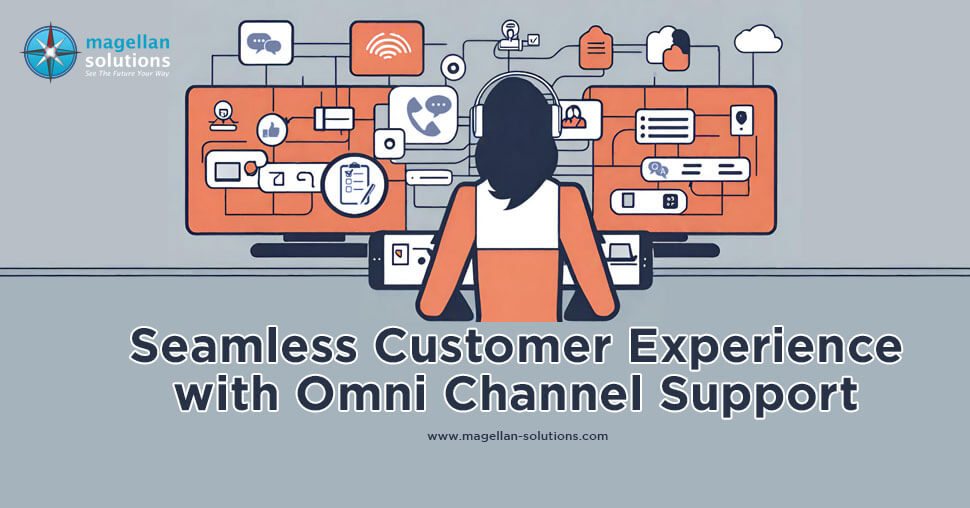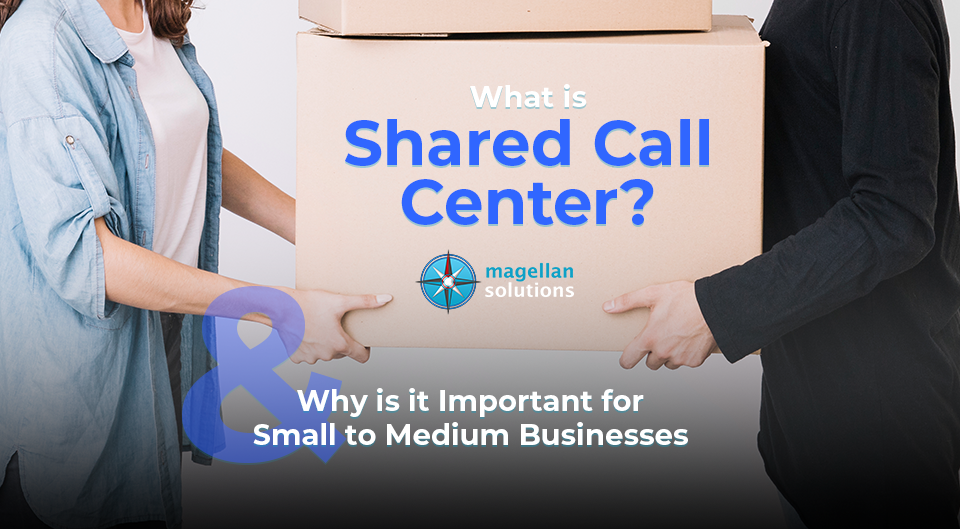Schedule a call with our outsourcing expert now and get a precise quotation that meets your requirements. Don't wait - get started today!
Imagine this: You’ve availed yourself of a product or a service but still have many questions in mind. You’ve tried calling their hotline, but the wait time is too long. You’ve sent them an email but heard no response. You even checked their social media accounts and only got an automated response. Frustrated, right?
What if there was a better way to communicate with the seller? On average, 51% of companies use at least eight channels to interact with customers, including emails, social media, websites, phones, live chat, and in-store.
Around 78% of customers use various channels to complete a transaction. They may order through an app or a website but choose SMS or live chat to get order updates and contact customer service.
Keep reading to learn about the highlights and significance of unified and consistent customer support across all platforms and devices and to know what omnichannel support is.
What is Omni-Channel Support
Omni channel support provides a smooth and convenient way for customers to reach out to a business. It gives customers multiple contact options, including chat, phone calls, email, and social media, and they expect to receive consistent and friendly assistance.
For example, a customer bought a new camera and called to inquire about its specifications. However, the call got disconnected in the middle of the conversation, and we decided just to use the live chat option on your website.
Through omni-channel customer support, the customer will still get accurate information about the camera and experience the same caliber of support as if they were speaking on the phone.
This strategy ensures that a customer can transition between communication channels seamlessly while maintaining continuity of information. It increases customer experience by promoting quick problem-solving that may later improve customer loyalty.
How to Build an Omni Channel Customer Support
Besides providing consistent messaging systems, omnichannel support may also serve as a marketing campaign that can positively impact sales. How? By showing your target audience your visibility on all platforms and different channels. But how do we turn this into reality?
1. Collect and Analyze Customer Data
Start by understanding your target market. Obtaining and evaluating customer data is essential to creating a successful omnichannel support plan. This approach may reveal important information about individual customers’ preferences, activities, and previous interactions.
You may use this data to create buyer profiles to customize customer support, making sure that every customer gets help that is specific to them, no matter which channel they choose.
By using this data-driven approach, you can learn your customers’ shopping behavior and adopt a marketing strategy that prioritizes consumer expectations and preferences.
2. Establish a Consistent Brand Message
Omnichannel support requires you to keep your brand messaging consistent across all platforms. This means you must ensure that all of the messages you send—by email, live chat, social media, or in person—are accurate and true to your company’s brand and core values.
The first step is to create unique brand messaging that resonates with your target market. Next, ensure that the tone and style of these messages are applied consistently across all mediums.
Examine and update your messaging often to ensure it remains relevant to changing market trends and customer expectations. Maintaining a consistent brand message throughout all customer experiences is important for building brand identification and fostering trust.
3. Leverage Technology
Utilize technology to establish a robust, multichannel support system through cloud-based services and customized mobile apps. Integrate cloud technologies to offer a unified customer experience across channels and effortless data accessibility.
Using the mobile app, customers may quickly communicate with support services while on the go. Cloud-based technologies provide flexibility and scalability, while mobile applications offer ease and immediate connectivity.
These technology applications provide an efficient, responsive omnichannel support system and streamline processes, increasing customer satisfaction and engagement. On the business side, you may use effective data handling, such as customer relationship management (CRM) systems, to manage customers’ information and profiles efficiently.
4. Start with Your Website and Social Media Channels
Creating an omni-channel across different channels is a process that takes time. Your goal is to be visible everywhere, but it would be more productive to focus first on platforms that are easily accessible to most of your audiences.
Starting with your website and social media platforms is a strategic approach, as these channels have a wider audience reach. By focusing on these platforms, you can establish an engaging presence and a brand identity before expanding to other platforms. You can achieve this through consistent content postings.
Consolidate emails, social media messages, and chat threads using a shared inbox to centralize incoming messages for a synchronized communication workflow. Utilize social media management tools to connect with your CRM to manage your social campaigns and easily track website visits and leads.
5. Measure and Optimize
Building an omni-channel support doesn’t end there! You must still measure its effectiveness in your overall operations. Key performance indicators should be monitored, including revenue, conversion rates, and client engagement.
You may conduct surveys regularly to measure how happy your customers are with the services provided and how well their concerns got resolved.
You may also measure the preferred communication methods commonly used by customers to contact you. In this way, the least used communication method can be improved further to achieve an even distribution of customer interaction across all channels.
Challenges in Implementing Omni Channel Support
Omni-channel support has benefits that bring convenience to its users. However, implementing it may pose challenges. A part of the implementation process is being aware of the difficulties you may encounter, as these challenges may serve as opportunities to make it a success. Here are some of them:
1. Connecting Online and Offline Data
One of the biggest challenges is integrating data from offline and internet sources. Integrated customer relationship management (CRM) solutions must be purchased so that customer data can move across physical stores, websites, and other touchpoints seamlessly.
These solutions offer a unified picture of client interactions across all media by bridging the gap between online and offline data.
2. Data Management
Handling customer support information through various channels, such as live chat and email queries, may be very demanding. Companies should implement a centralized data management system to handle this problem.
By combining data from multiple sources, this system streamlines customer data access, guarantees data quality, and uses automation tools for effective classification and organization.
3. Training
It can be challenging to give team members uniform training across all platforms. Each channel has specific expectations and features that they must be aware of.
It is essential to have a thorough training program that addresses platform-specific features, client expectations, and subtle communication.
Your employees can stay informed about changing channel dynamics by participating in ongoing training sessions and continuing education programs.
4. Channel Conflict
Conflicts may arise during the planning and execution of omnichannel support, as multiple communication channels may present different ways of usage. Implementing a clear omnichannel strategy that aligns with overall company goals can assist businesses in overcoming channel conflict.
A unified approach can be made possible by effectively communicating this strategy to all involved teams, encouraging collaboration, and emphasizing the mutually beneficial aspects of each channel
Deliver Seamless Customer Experiences Across All Channels
Do you need a reliable and professional BPO company to handle any communication channel to reach more customers? At Magellan Solutions, our omni-channel outsourcing team is experienced and expert in enhancing your product’s visibility by engaging customers across multiple platforms.
Don’t settle for less when you can have the best. Experience the difference with Magellan Solutions, the trusted choice for omnichannel call center services. Contact us today and get a free quote.













